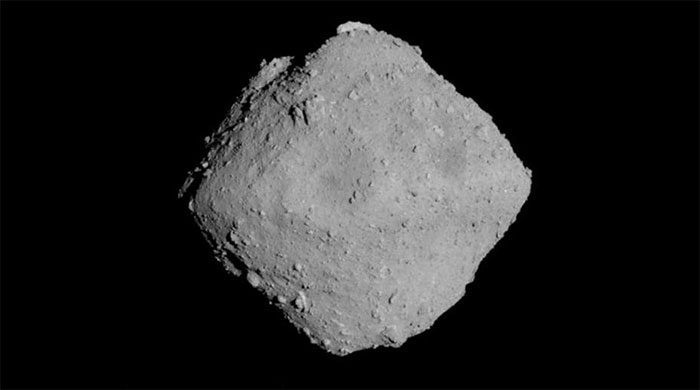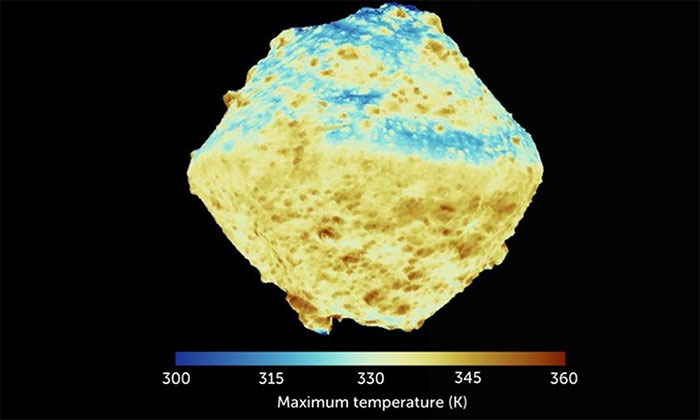Asteroids near the Earth have a porous structure
Data from Japan's Hayabusa2 spacecraft show that the Ryugu asteroid is highly porous, similar to "frozen coffee water".

Photo of asteroid Ryugu from the Hayabusa2 ship.(Photo: Nature).
Ryugu is one of the most studied asteroids in the universe. It is not only a "time capsule " about the history of the formation of the solar system, but also potentially dangerous with orbits that can reach extremely close to Earth and are large enough (1 km wide) to cause damage. serious in case of collision with our planet.
According to a new study published in Nature on March 16, Japanese astronomers revealed that Ryugu is a highly porous asteroid with about 50% of its volume being holes. This strengthened the theory that the 700 million-year-old object was formed from a "rubble" after a larger stone object collapsed.
The team, led by scientist Tatsuaki Okada of the Japan Aerospace Exploration Agency, used the Hayabusa2 to measure the asteroid's maximum temperature in full rotation. The heat map shows that most of the planet's surface is "cool", with the blue areas having temperatures around 27 ° C, the yellow regions around 57 ° C and some red spots (areas with dense rock density). condensate) with a temperature of 87 ° C.

Heat map of Ryugu asteroid.(Photo: Science News).
Observing how the asteroid's surface holds and releases heat can provide clues about its composition and structure. High-density rocks will pick up heat slowly and retain heat longer, while porous rocks show rapid temperature changes, like sand on a beach, Okada explained.
The new finding could be significant in studying the origin of the solar system. Many astronomers believe our Solar System was originally a "violent place", with objects colliding endlessly before fragments accumulate, forming planets and asteroids like the day. now on.
- New findings on the asteroid Ryugu near the Earth
- Japanese spacecraft dropped the last robot on the asteroid
- The first pore fluid in the world
- Asteroids are about to fly through the earth
- Thousands of bombs threaten the life of the earth
- 4 asteroids are threatening the Earth
- The risk of asteroids stabbing the Earth is higher than expected
- Giant asteroids do not endanger the Earth
- Four asteroids are flying past the Earth
- Identify asteroids to lead near Earth
- Earth has just escaped the 'terrorist' from 4 asteroids
- The process of shattering asteroids into the Earth's atmosphere
- NASA reveals two narrow asteroids 'swinging fists' into Earth
- Software to predict the harmful effects of meteors
 Van Allen's belt and evidence that the Apollo 11 mission to the Moon was myth
Van Allen's belt and evidence that the Apollo 11 mission to the Moon was myth The levels of civilization in the universe (Kardashev scale)
The levels of civilization in the universe (Kardashev scale) Today Mars, the sun and the Earth are aligned
Today Mars, the sun and the Earth are aligned The Amazon owner announced a secret plan to build a space base for thousands of people
The Amazon owner announced a secret plan to build a space base for thousands of people